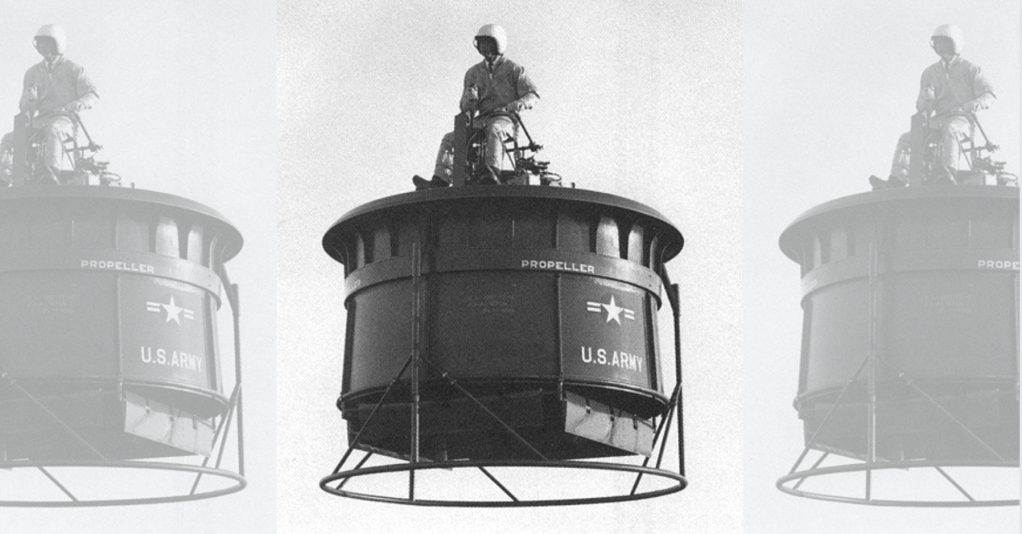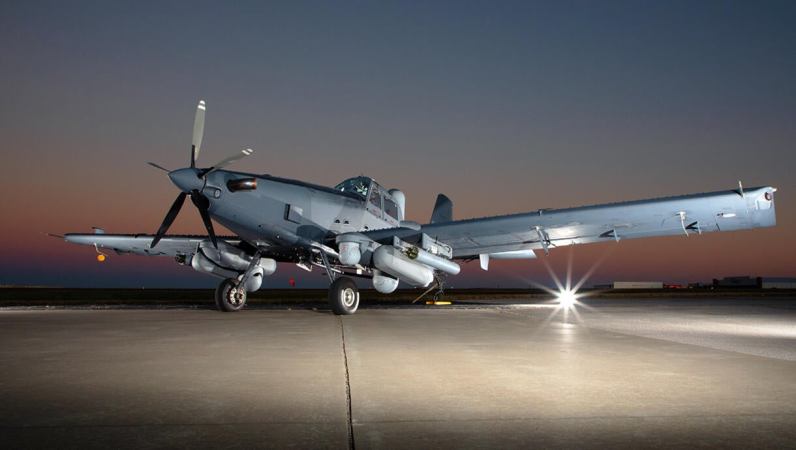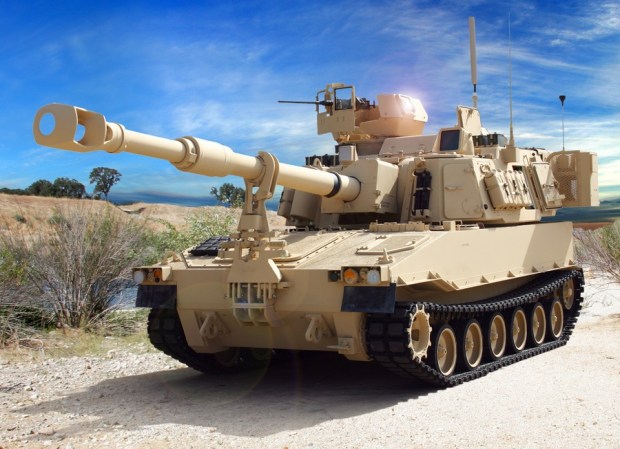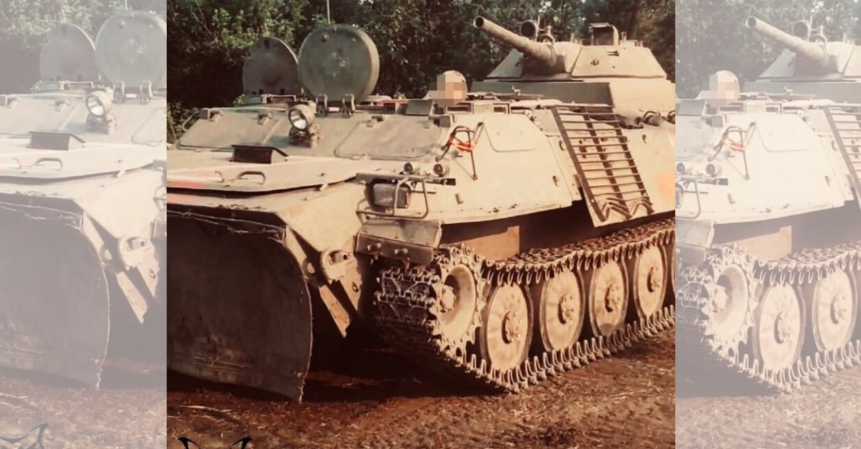Following WWII and the dawn of the nuclear age, science-fiction and its associated ideas looked to be just a few decades away. Personal jetpacks, flying cars, and elevators to the moon occupied the minds of children and adults alike. Seemingly straight from the pages of a comic book, the U.S. Army and Navy even undertook a joint project to develop a flying platform for the military.

Also described as a magic carpet, the flying platform concept is a derivative of the idea of personal flying contraptions. The military became interested in the flying platform as a way to transport troops across minefields or elevate sharpshooters to strategic vantage points. In 1953, the Army issued contracts to the De Lackner Company and Hiller Aircraft to develop the concept further. The Office of Naval Research, which had pre-existing research programs with Hiller, agreed to manage the program on the Army’s behalf.

The model 1031-A-1 was developed for ONR and flew in 1955. It was powered by two 40-horsepower engines and featured a shallow duct area. Meanwhile, the larger VZ-1 Pawnee was developed for the Army and later added a third 40-horsepower engine with an extended duct area. The final iteration of the VZ-1 saw the duct area enlarged even further. The Pawnee first flew a year after the ONR model.

Interestingly, the flying platform was designed to be controlled kinesthetically. That is, the pilot simply had to lean in a particular direction and the platform would follow. As noted by the Smithsonian Institute, the aerodynamic advantages of the ducted fan design made the platform “incapable of tumbling, because if the pilot leaned over too far, the platform would pitch up and slow down.” Because of its larger size and added weight from the third engine, the final version of the VZ-1 Pawnee had to be flown from a seated position with conventional controls.

Three of each of the flying platform variants were built. However, neither was put into full-scale production. With limited power and thrust, the 1031-A-1 could barely fly out of ground effect. The Army specifically judged the VZ-1 to be too small, slow, and limited in altitude to be an effective combat vehicle. Both the Army and the Navy abandoned the flying platform concept altogether.

Of the six prototypes built, two survive today. Both of them are 1031-A-1 models built for ONR. One is located at the Hiller Aviation Museum at the San Carlos Airport in San Carlos, California. The other is on display at the Smithsonian National Air & Space Museum’s Udvar-Hazy Center in Chantilly, Virginia.










